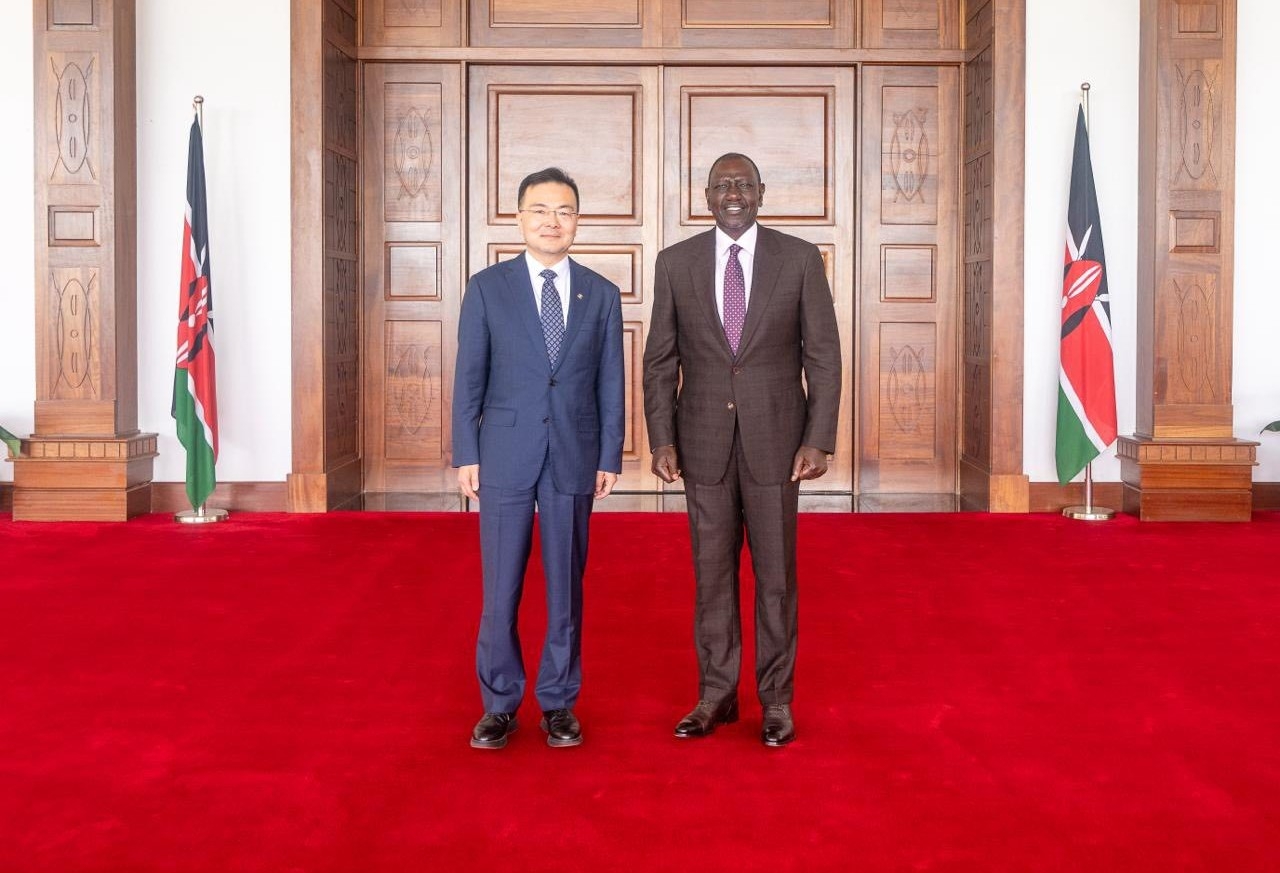Reeds, cattails, flowering grasses, aquatic life, frogs, water birds, fish bushes and trees, ponds and lakes--and everything that contributes to life-preserving and life-giving ecosystems vital in sustaining wildlife and human life.
They are endangered wetlands.
These wetlands and marshes have been heavily degraded and the National Environment Management Authority has announced plans to restore more than 10 endangered wetlands across the country. The project will cost billions of shillings.
Nema director general Mamo Mamo says all the wetlands are being mapped in readiness for the ambitious project costing billions.
“We are looking for the budget from the line ministry to undertake this project,” Mamo said.
The authority says a number of wetlands are facing a myriad of threats, although they are crucial in providing many ecological benefits and socioeconomic goods and services.
Ecological services include water supply, food production, construction materials, and products for the cottage industry, tourism and recreation.
Wetlands also help to control floods, recharge and discharge water, filter water, store nutrients and provide habitats for wildlife. Healthy wetlands are central to solving the interconnected climate, biodiversity, and water crises.
Wetlands occupy three to four percent of Kenya’s landmass, or about 3.45 million acres (14,000 hectares), fluctuating to as much as six percent during the rainy season.
The country has a variety of wetlands stretching from coastal and marine wetlands to inland freshwater lakes, rivers, dams and swamps as well as the saline lakes in the Rift Valley system, constructed wetlands in irrigation schemes and sewerage treatment systems and the mountain bogs, peat and glacier lakes.
Some of the wetlands are recognised as important conservation areas like national parks, national reserves, Ramsar Convention sites, important bird areas and World Heritage sites.
Apart from being biodiversity hotspots, the wetland resources are equally crucial for income generation, livelihood and the well-being of the communities.
Lack of effective management mechanisms and proper appreciation of their true worth have meant wetlands continue to be degraded through encroachment and unsustainable activities, such as settlement, conversion and overexploitation of their resources.
The United Nations says the world lost almost two-thirds of its wetlands due to drainage, conversion for agriculture, urbanisation, and infrastructure such as dams, dykes, harbours, and ports between 1900 and 2000.
Nema director general Mamo said the ambitious project, which will need a lot of resources and will be guided by the Wetlands Restoration strategy 2023-2032.
Some of the wetlands mapped out for rehabilitation include water pans, dams, swamps, water ponds and lakes.
The DG said short- and long-term interventions are required to address the challenges facing wetlands.
These include working on an inventory or mapping of wetlands before publicising their boundaries.
This is critically important as the boundaries of most wetlands are either not known or not enforced.
As a result, many riparian areas have been encroached upon for farming and development among other uses.
This has happened even in wetlands found in protected areas.
Wetlands will then be gazetted for protection.
The move will halt biodiversity loss and enhance ecological functions of many wetlands that support community livelihoods.
Guidelines that will help guide the management of wetlands will be developed.
The National Environment Management Authority (Nema) said there are many pieces of legislation that promote the management of wetlands.
Their implementation is, however, incoherent and conflicting, so harmonisation is essential to management wetlands consistently.
Mamo said some of the wetlands that have been degraded will have to be restored. “Restoration and rehabilitation of wetlands at a catchment scale is a priority issue for intervention. Although whole catchments are faced with severe degradation, many initiatives tend to be at a local scale.”
The DG said restoration and rehabilitation are uncoordinated and sometimes short-lived, thus their benefits not fully realised.
Some wetlands have been identified as having high potential for ecosystem restoration.This includes tree-growing and support for livelihoods as they ensure the availability of water.
Changes in hydrological conditions, sand harvesting, over-abstraction of water, and overgrazing are other challenges.
These threats could complicate issues for Kenya, which has per capita water availability of less than 600 cubic metres.
This is below the global threshold of 1,000 cubic metres per capita.
Water and wetlands are inseparable and vital to life, human well-being, and the health of the planet.
Today, more freshwater is being used than nature can replenish.
Wetlands biomass is responsible for keeping rivers at a normal level as they hold water and release it to rivers as needed.
An acre of wetland can store as much as 1.5 million gallons of floodwater.
The impact of climate change is also likely to make matters worse if the continued destruction of wetlands is not curbed.
Some of the benefits of wetlands include flood control, preventing soil erosion prevention, allowing water discharge and recharge, water purification, and nutrient and toxic retention.
They also provide wildlife habitats and centres of biodiversity and help in the prevention of saline water intrusion.
Wetlands are also amongst the earth’s top carbon stores.
By conserving and restoring high-carbon wetlands, the country can reduce carbon emissions and increase its capacity to adapt to climate change, while improving biodiversity, water security, and human well-being.
Environment laws define wetlands as areas permanently or seasonally flooded by water where plants and animals have become seasonally adapted.
Wetlands are found in Lake Victoria, Lake Naivasha, Lake Baringo, Lake Turkana, Lake Bogoria, Lake Nakuru and Lake Elementaita. They are also found in swamps such as Yala, Kingwal, Nyando, Shompole, Lorian, Ondiri, and Saiwa.
Wetlands are also found in Athi River, Ramisi River, Tana River, Nairobi River, and Ewaso Ngiro.
Others are found in Olkaria, Menengai, and Eburu areas.
The Environmental Management and Coordination Act of 1999 (Section 42) provides the legal frameworks for the governance, protection and conservation of wetlands.
Section 9 of the Act mandates Nema to undertake supervision and coordination of all matters relating to the environment.
Nema, with the help of stakeholders, has developed wetlands management plans belonging to Lake Ol Bolossat, Lake Jipe, Lake Chala, Tana Delta, Yala Swamp, and Ondiri Swamp, and Lake Kenyatta in Lamu among others.
Wetlands International has, for instance, partnered with the county government of Lamu to restore wetlands within the county.
Through a Memorandum of Understanding that was signed last month, the two organisations have committed to ensure sustainable use of wetlands for the benefit of people and nature.
Under the MOU, Wetlands International will provide technical expertise and support for the development and implementation of wetland conservation initiatives in Lamu county.
The county unit will provide the necessary resources and logistical support, in addition to facilitating community engagement and participation.
The progress of this collaboration will be monitored and evaluated annually by a joint committee comprising representatives from both parties.
Some of the wetlands have management plans in place.
There is no money, however, to implement them.
For instance, Lake Ol Bolossat has an Integrated Management Plan for 2020-2030. Lack of implementation has contributed to the drying up of the lake.
The lake is facing challenges such as degradation at the upper catchment, charcoal burning and encroachment.
The main problem that hinders the conservation of the lake and its catchments is the land tenure system and ownership.
Other challenges facing the lake include biodiversity loss and habitat degradation due to over-dependence and over-exploitation of natural resources.
The lake is also faced with land-use changes and unplanned development. This has led to encroachment on riparian areas and conflicting land needs between farmers and pastoralists.
The lake in Nyandarua county is the only one in the Kenya highlands. Its catchment area is approximately 1.18 million acres (4,800 square kilometres) and it comprises 80 per cent marsh, 15 per cent open water and five per cent dry land.
Some Sh916 million is needed under the Integrated Management Plan 2020 -2030 to restore the lake.
The plan to reduce degradation proposes interventions such as strengthening of water resource user associations, streamlining water abstraction, storage and delivery and enforcing regulations that prevent encroachment into riparian zones.
Other interventions include identifying and supporting the restoration of degraded areas in the catchment, encouraging farm forestry among others.
About Sh10 million is needed to delineate and mark the lake boundaries, while another Sh10 million is needed to develop and implement alternative sources for products derived from critical habitat, such as charcoal, and fish.
The plan estimates Sh30 million is needed to establish a community conservation/conservancy area and Sh85 million to establish tourist facilities, infrastructure including water, electricity, and access roads among other interventions.
Authorities say the Nyandarua lake is very important as it hosts a number of species. The lake is an internationally recognised Wetland as a Key Biodiversity Area. It is Kenya’s 61st most Important Birds Area, with more than three hundred bird species.













